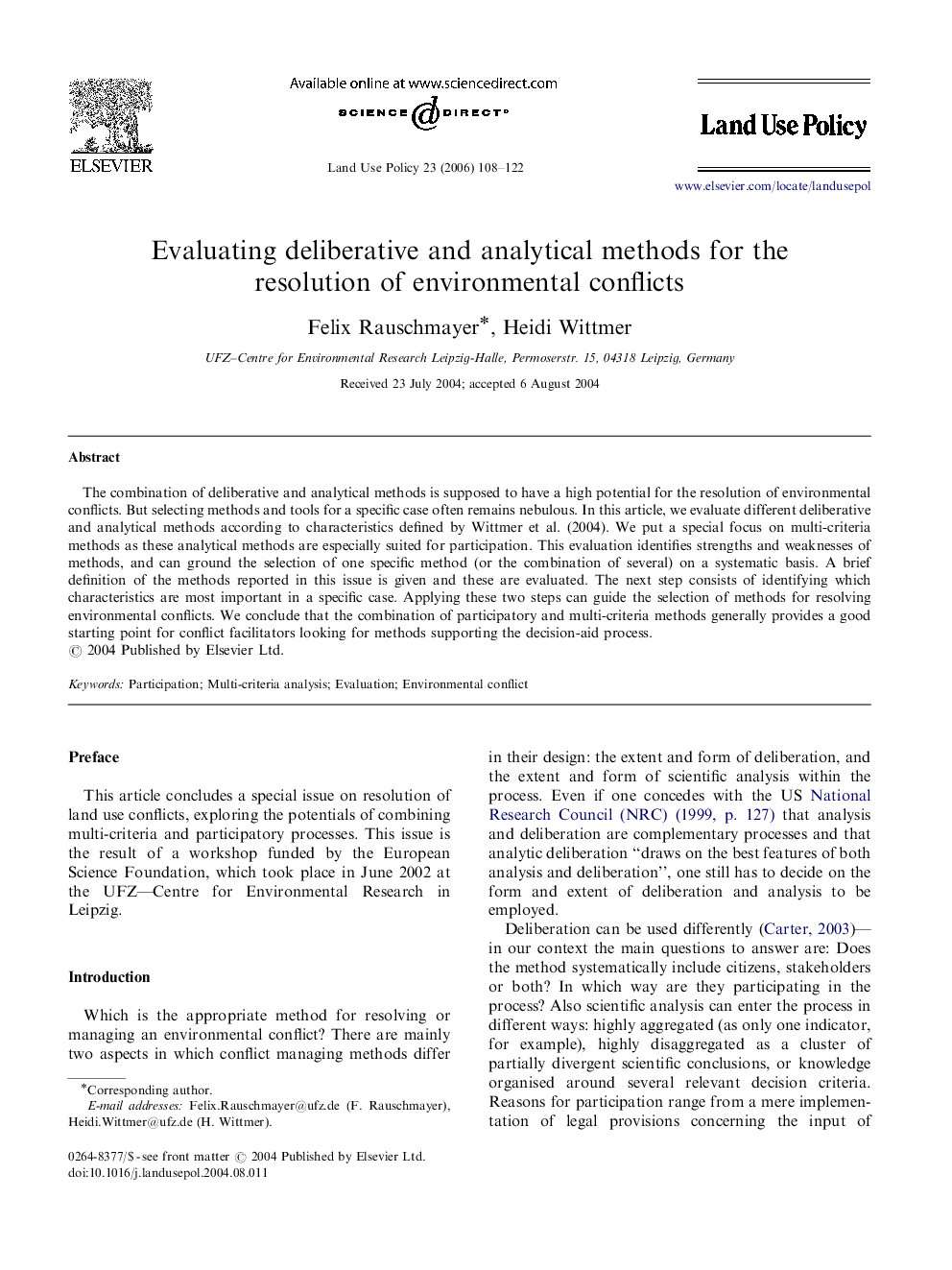| Article ID | Journal | Published Year | Pages | File Type |
|---|---|---|---|---|
| 93907 | Land Use Policy | 2006 | 15 Pages |
The combination of deliberative and analytical methods is supposed to have a high potential for the resolution of environmental conflicts. But selecting methods and tools for a specific case often remains nebulous. In this article, we evaluate different deliberative and analytical methods according to characteristics defined by Wittmer et al. (2004). We put a special focus on multi-criteria methods as these analytical methods are especially suited for participation. This evaluation identifies strengths and weaknesses of methods, and can ground the selection of one specific method (or the combination of several) on a systematic basis. A brief definition of the methods reported in this issue is given and these are evaluated. The next step consists of identifying which characteristics are most important in a specific case. Applying these two steps can guide the selection of methods for resolving environmental conflicts. We conclude that the combination of participatory and multi-criteria methods generally provides a good starting point for conflict facilitators looking for methods supporting the decision-aid process.
